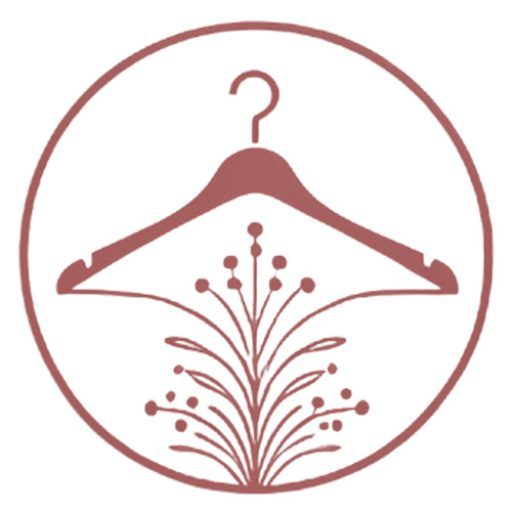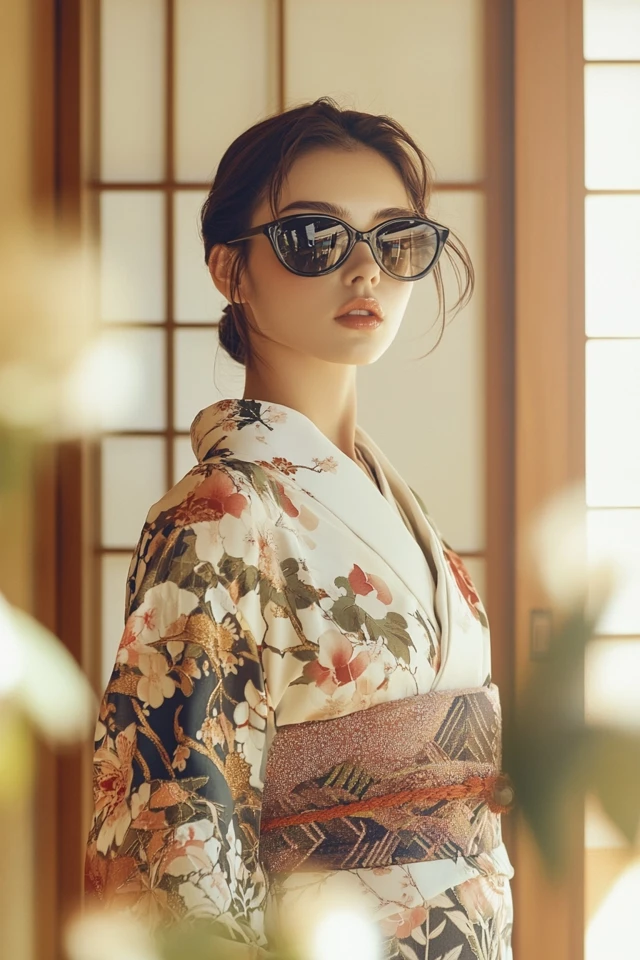The Japanese tea ceremony, or chanoyu, is a deeply meaningful ritual that emphasizes harmony, respect, and tranquility. Every element of the ceremony, from the tea utensils to the attire, reflects the elegance and mindfulness central to Japanese culture. Among these, the kimono holds a place of honor, as it conveys not only tradition but also the wearer’s respect for the occasion.
I had the privilege of participating in a tea ceremony during a visit to Kyoto. Wearing a traditional kimono with a soft, earthy design made me feel connected to the ritual’s serene energy. The intricate process of dressing in the kimono was as reflective as the tea ceremony itself—a quiet reminder to appreciate the beauty of tradition. In this post, we’ll explore the significance of kimonos in tea ceremonies, how to select the appropriate style, and ways to honor this cherished tradition.
About the Author and My Trend Boutique
Foundational Concepts
The Role of the Kimono in the Japanese Tea Ceremony
The kimono is more than just clothing in Japanese culture—it’s an expression of art, tradition, and the wearer’s connection to the occasion. For tea ceremonies, the kimono serves as a symbol of respect and humility, aligning with the ritual’s themes of simplicity and mindfulness.
Key features of tea ceremony kimonos include:
- Subdued Colors and Patterns: Tea ceremony kimonos often feature soft, muted tones and delicate patterns that reflect the changing seasons.
- Seasonal Relevance: The design of the kimono often incorporates motifs appropriate for the season, such as cherry blossoms in spring or autumn leaves in fall.
- Attention to Detail: The placement of patterns, the choice of obi (sash), and accessories are all carefully considered to complement the occasion.
The kimono adds a layer of aesthetic harmony to the tea ceremony, creating a seamless connection between the participant and the environment.
Color Psychology & Emotional Impact
Choosing Colors and Patterns for Tea Ceremony Kimonos
The colors and patterns of a tea ceremony kimono are chosen thoughtfully to harmonize with the season and the ambiance of the event. Here’s how they are typically selected:
- Spring: Pastel colors like soft pink, light green, or pale blue with floral motifs such as plum blossoms or wisteria.
- Summer: Cooler shades like white, sky blue, or lavender, often with water or bamboo patterns to evoke a sense of freshness.
- Autumn: Earthy tones like burnt orange, mustard yellow, or deep red, with motifs such as maple leaves or chrysanthemums.
- Winter: Darker, richer colors like navy, black, or deep purple with subtle patterns like pine trees or snowflakes.
I still remember wearing a kimono with an elegant plum blossom design during an early spring tea ceremony. The soft pink hues and delicate motif felt perfectly attuned to the renewal of the season, enhancing the experience of harmony and mindfulness.
Personal Style & Body Type Considerations
Selecting the Right Kimono for Your Tea Ceremony
While the kimono style for tea ceremonies follows traditional guidelines, there are still opportunities to choose one that flatters your body type and personal style.
- Shorter Frames: Opt for kimonos with smaller, more delicate patterns that don’t overwhelm your figure.
- Taller Frames: Larger motifs and bolder designs can create balance and enhance your overall look.
- Fuller Figures: Choose a kimono with vertical patterns or simple, flowing designs to elongate your silhouette.
- Petite Frames: A monochromatic kimono or one with minimal patterning can help create a cohesive, elegant appearance.
No matter your body type, the most important aspect is ensuring the kimono is tied correctly and fits well, as this reflects the formality and respect of the occasion.
Picture Gallery
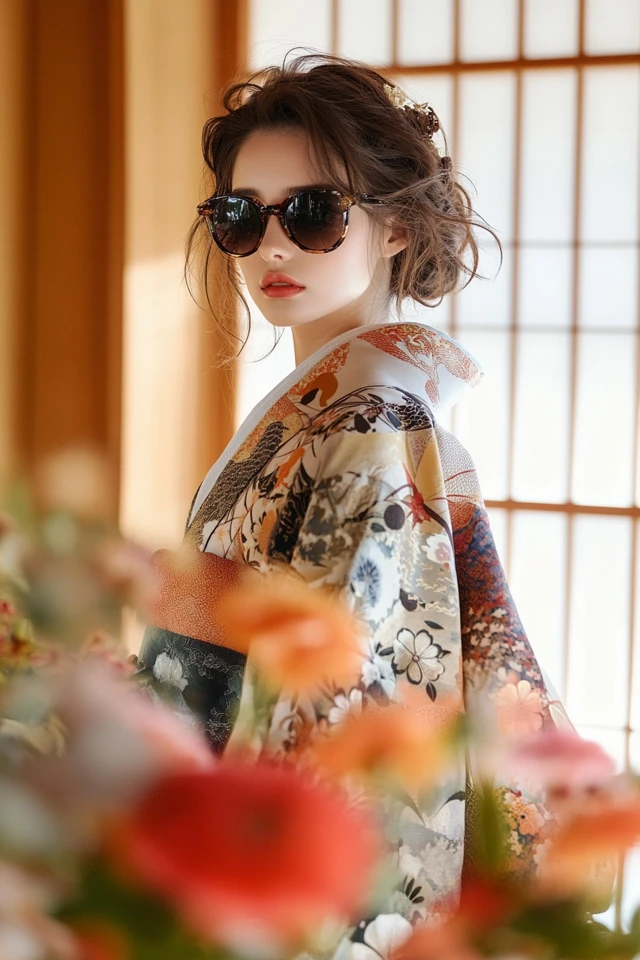
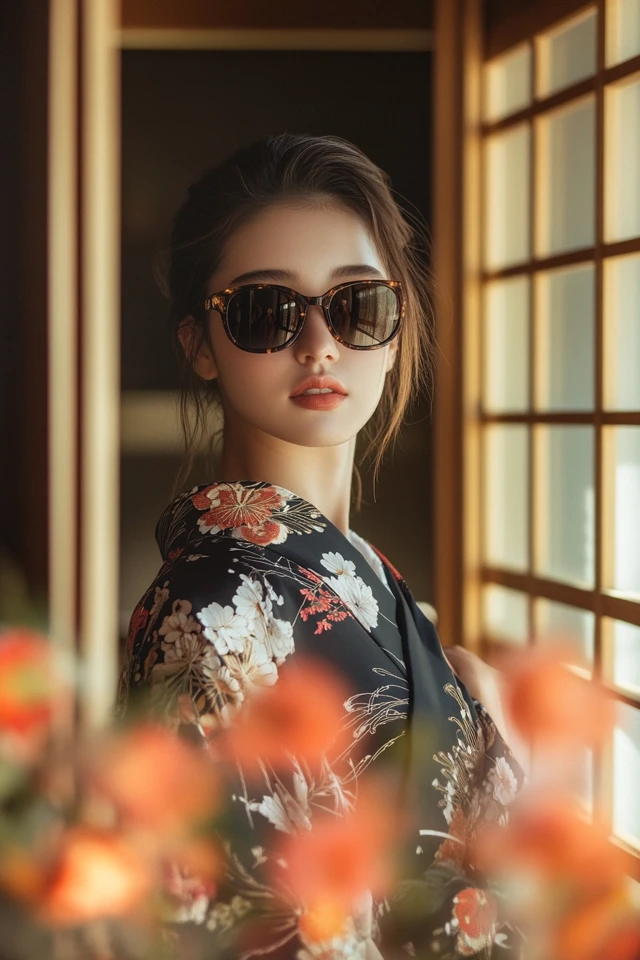

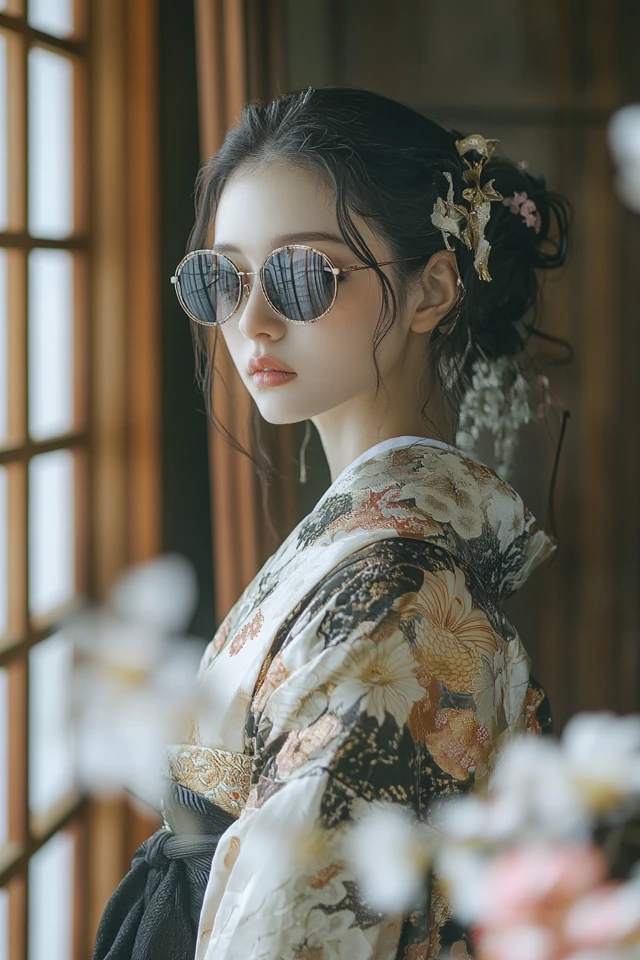
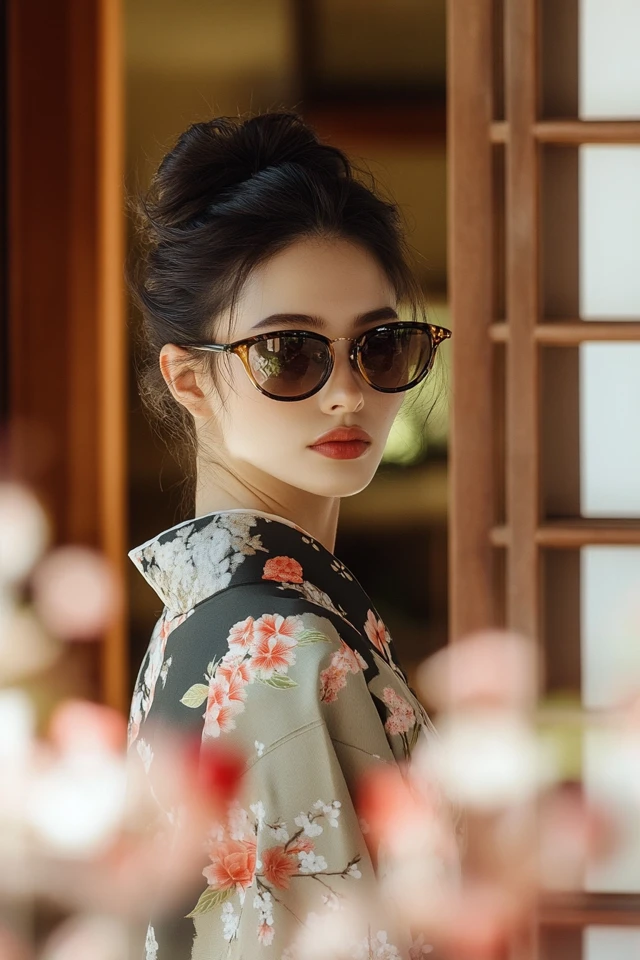
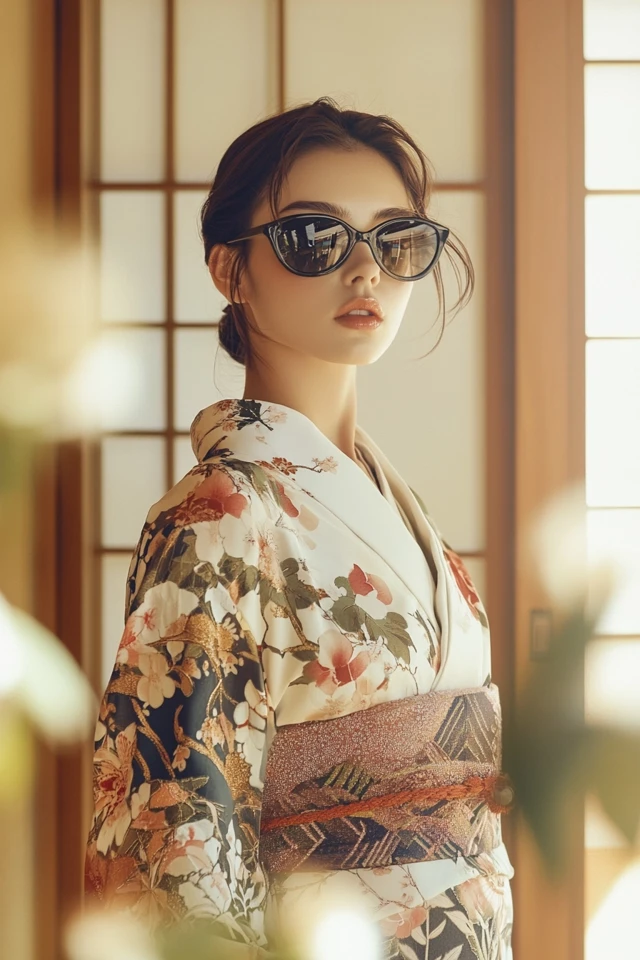
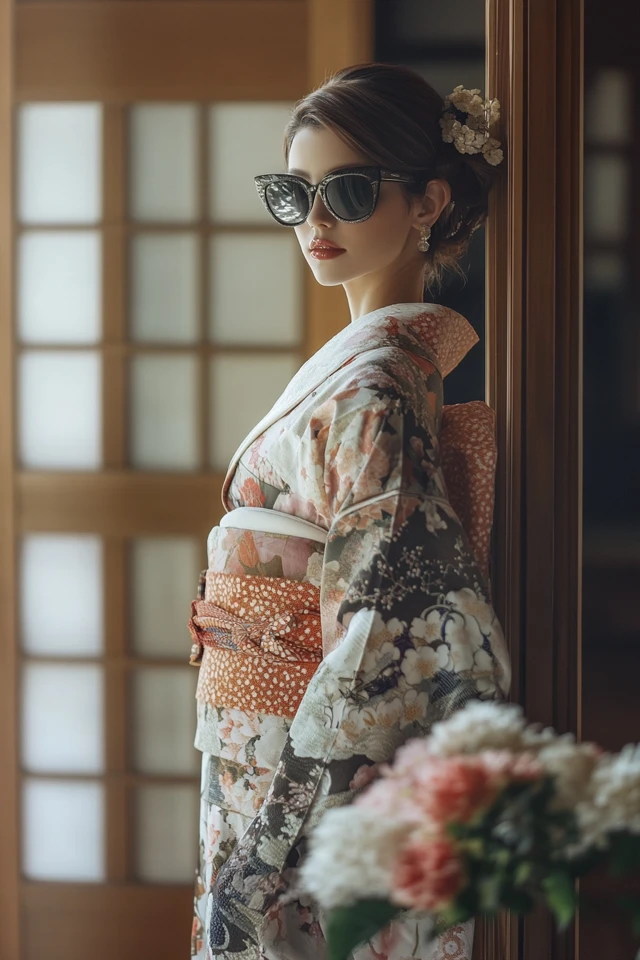
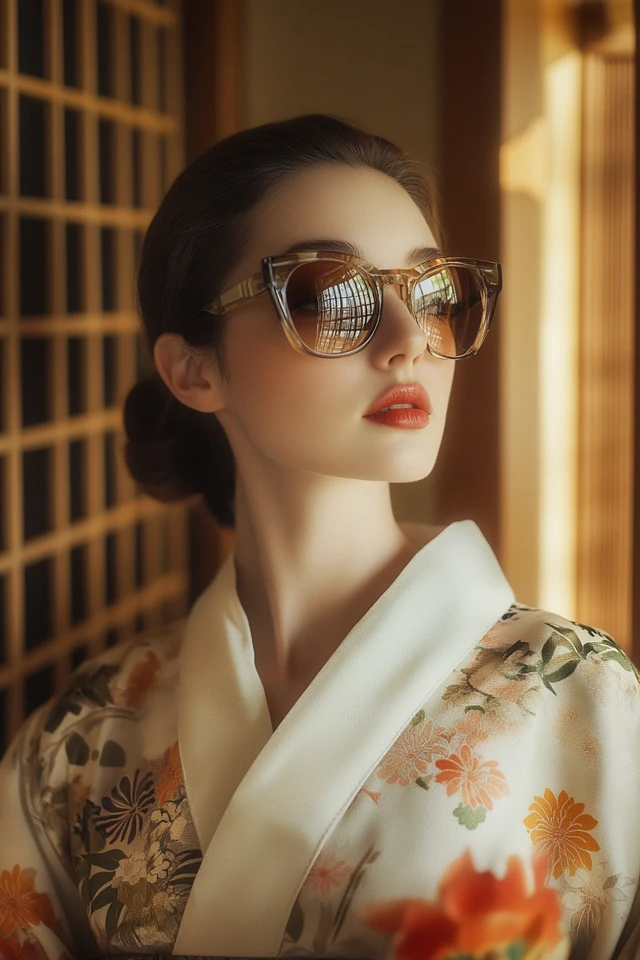

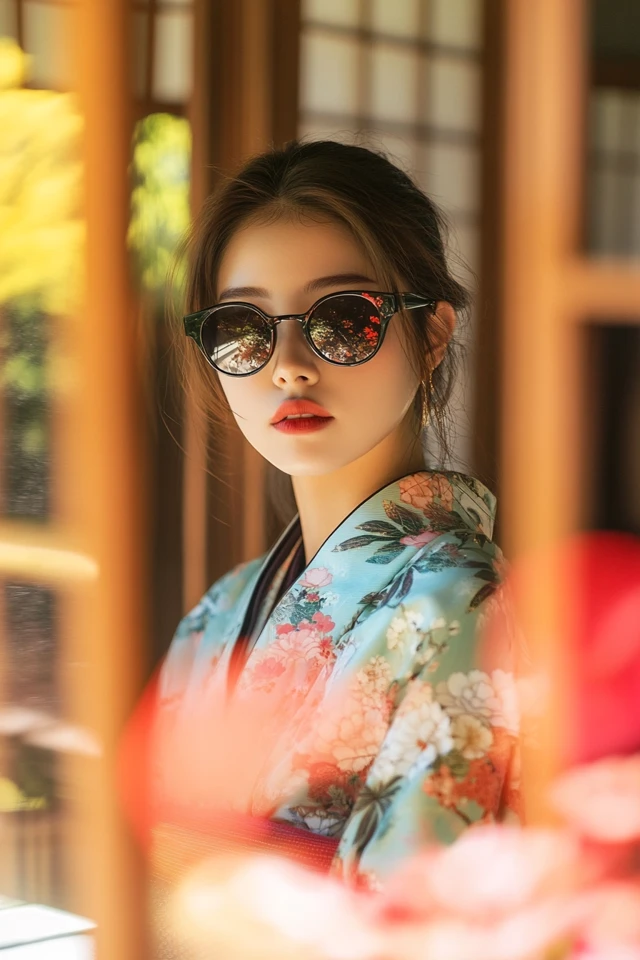
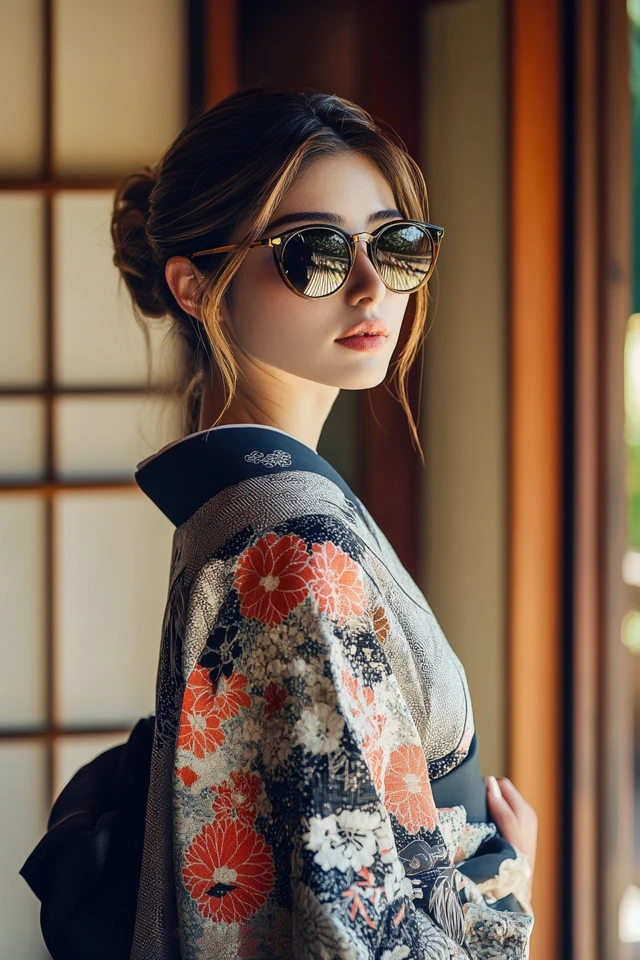

Current Trends & Timeless Staples
Styles of Kimonos for Tea Ceremonies
Traditional tea ceremony kimonos follow specific guidelines but have timeless designs that remain relevant today. Here are some key styles to consider:
Classic Tea Ceremony Kimonos:
- Iro Muji: A single-color kimono without patterns, symbolizing simplicity and elegance. Perfect for those hosting a tea ceremony.
- Tsukesage: A modest kimono with small patterns near the hem or sleeves, ideal for participants.
- Komon: A casual kimono with repeated, understated patterns suitable for less formal tea ceremonies.
Modern Takes:
- Subtler color gradients instead of bold blocks of color.
- More breathable fabrics like lightweight silk blends for summer ceremonies.
- Incorporating vintage obis or accessories for a unique yet traditional look.
During a tea ceremony in early autumn, I wore a light beige Iro Muji kimono paired with an ochre obi featuring subtle chrysanthemum embroidery. The simplicity of the design allowed me to feel grounded while complementing the season’s beauty.
Practical Tips & Recommendations
How to Wear and Accessorize Your Kimono
- Practice Dressing in Advance: Wearing a kimono involves multiple layers, ties, and folds. If it’s your first time, practice or seek help from an expert.
- Choose a Simple Obi: For tea ceremonies, the obi should be understated, with soft, harmonious colors or minimal patterns.
- Accessorize Subtly: Opt for simple zori sandals, tabi socks, and minimal jewelry to maintain the ceremony’s understated elegance.
- Focus on Posture and Movement: Wearing a kimono affects your posture and how you move. Practice sitting and walking gracefully to fully embrace the ritual’s essence.
- Seasonal Hairpieces: If you wish to add a decorative touch, use small seasonal flowers or combs in your hairstyle for an elegant finishing detail.
For my first tea ceremony, I was lucky enough to have a friend help tie my obi. Her advice to keep the accessories minimal and focus on the season’s beauty made all the difference in completing the look.
FAQs
1. Can men wear kimonos to tea ceremonies?
Yes! Men’s tea ceremony kimonos are typically simpler, with subdued colors like gray, brown, or navy, and are paired with a formal hakama (trouser-like garment).
2. Is it appropriate to wear modern kimonos to a tea ceremony?
Traditional kimonos are preferred, but modern interpretations that respect the ceremony’s principles of simplicity and harmony can also be suitable.
3. Are silk kimonos the only option for tea ceremonies?
While silk is traditional, lightweight options like cotton blends or synthetic fabrics are acceptable for less formal or summer ceremonies.
4. How do I choose the right obi for a tea ceremony?
Stick to understated designs with minimal embellishments. The obi should complement the kimono without overpowering it.
5. Can I wear bright or bold colors to a tea ceremony?
It’s best to avoid overly bright or flashy colors, as they may distract from the ceremony’s serene and respectful atmosphere.
Conclusion
Traditional kimonos are an integral part of Japanese tea ceremonies, symbolizing respect, harmony, and an appreciation for beauty. By choosing a kimono that reflects the season and occasion, you can fully immerse yourself in the ritual’s elegance and mindfulness.
Have you ever worn a kimono for a tea ceremony or similar event? Share your experiences and favorite styles in the comments below, and don’t forget to subscribe for more insights into cultural fashion. Let’s honor tradition while celebrating the beauty of the present moment.
